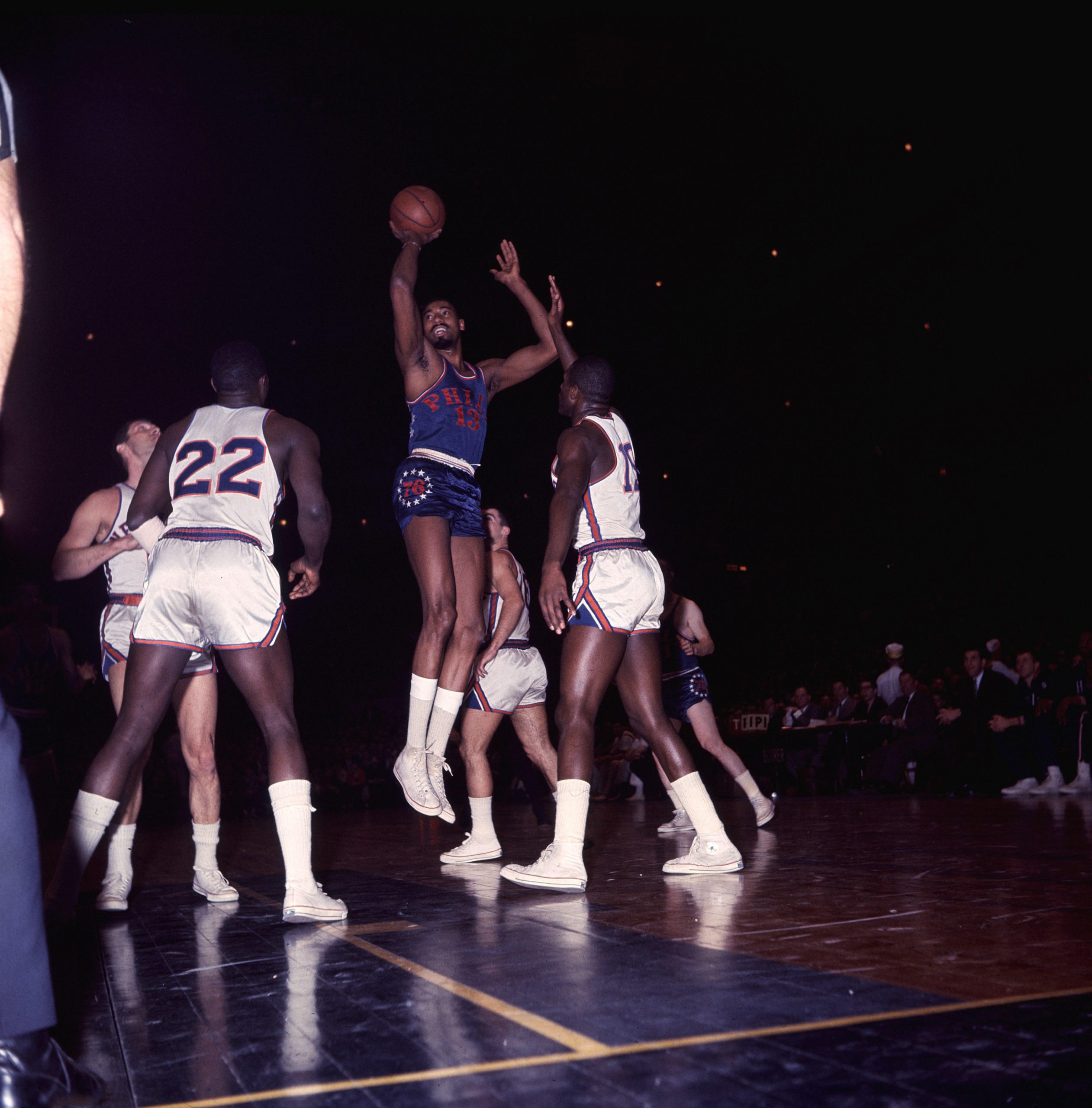The Big Man Can’t Shoot
Why do you care what other people think? The post The Big Man Can’t Shoot appeared first on Tricycle: The Buddhist Review.

From their very beginnings, both Zen and Buddhism itself have run counter to the way we ordinarily understand the world. Zen announced itself nearly 1,500 years ago as “a teaching beyond words and letters, directly pointing to the mind.” Unlike conventional study, Zen practice isn’t about acquiring knowledge but about seeing—about going beyond duality, beyond the delusion of self and other. The Buddha’s original teaching is no less radical.
It didn’t take me long, after diving into Alan Watts and D. T. Suzuki, to buy into the philosophical understanding they laid out, but actually living out of that understanding is the unfinished work of a lifetime. As we begin to pay attention to how our own minds work, we begin to realize how conditioned and indoctrinated we are—how deeply the conventional concerns and accepted truths we’ve grown up with are embedded in our lives. How often do we find ourselves channeling the voice of our mother or father, sometimes word for word.
It isn’t easy and it’s not comfortable to turn our back on the values and conventions all around us, especially when they’re unexamined. It’s “normal” to chase after praise and success and to measure our worth by how far we’ve risen in the eyes of others. Simply put, it’s very hard to stop caring about what other deluded people think.
I got on to this subject after listening to an episode of the podcast Revisionist History, hosted by Malcolm Gladwell. The title is “The Big Man Can’t Shoot,” and the nominal subject is shooting free throws. The Big Man is Wilt Chamberlain, one of the greatest players in the history of the game. Wilt was seven feet, one inch and 275 pounds, and easily dominated play, even on the professional level. The podcast begins with the radio play-by-play of what was arguably the greatest basketball performance ever, in which Chamberlain scored one hundred points, something no one else has ever come close to doing. His only real weakness as a player was his abysmal free throw percentage (something around 40 percent), but in this one season he had adopted an underhanded method of shooting under the tutelage of his teammate Rick Barry, one of the great free throw shooters of all time. Now he was making them routinely, and in this particular game, he made twenty-eight of thirty-two.
Despite his success, in the following season, Wilt returned to shooting free throws conventionally, and he went back to missing more than half. He told Barry he couldn’t shoot underhanded anymore; it made him feel like a “sissy.” We hear Barry explain how mechanically simpler and more accurate it is to shoot underhanded and that anyone can improve their success rate if they switch. Nonetheless, he was able to convince only two other players to shoot that way, and one of them was his own son. Everyone resisted. Everyone felt they looked foolish. These are all players at the highest level, driven to excel, to win. Yet that gets trumped by the fear of ridicule, the fear of “looking like a sissy.” You can hear the indignation in Rick Barry’s voice that great players are willing to sacrifice winning in order to maintain their image.
Thinking that the barrier to adopting a better method was fear of “looking like a girl,” the producer of the podcast visited the Columbia University women’s basketball team to see if they might be willing to give it a try. The players didn’t call it a sissy shot; they called it a granny shot. And no one was willing to switch.
Clearly, Barry is one of those people who doesn’t care so much what other people think, who’s willing to go his own way in the face of criticism. Yet even he took some convincing. His father introduced him to the underhanded free throw when he was in college, and he balked. He knew he’d be mocked. His dad pointed out that “they can’t make fun of you if you don’t miss,” and that’s what happened.
For most of us, the approval or disapproval of others is an overwhelming force. We’re conditioned and accustomed to reading the crowd, to devoting a significant amount of our mental energy to understanding where we stand in the gaze of others. From an evolutionary point of view, human beings have been shaped by the need to measure up and to please others so that they are more likely to pass their genes on to the next generation. That’s how evolution works. You could say we’re all the descendants of people pleasers. And so, if everyone around you feels one way, it’s uncomfortable to feel another.
There’s a problem, of course, if everyone around you is deluded, if society’s values don’t make sense. And they don’t. Society defines success in terms of career, wealth, and reputation. But as Anthony de Mello points out, “Being president of a corporation has nothing to do with being a success in life. Having a lot of money has nothing to do with being a success in life. You’re a success in life when you wake up! Then you don’t have to apologize to anyone, you don’t give a damn what anybody thinks about you or what anybody says about you. You have no worries; you’re happy. That’s what I call being a success.”
It’s alarming to see how much we do care about the opinions of others and how willing we are to compromise our values so that we’ll fit in. This is one reason the Buddha emphasized the importance of having good spiritual friends. It’s so much easier to sit with others, to have companions on the path. It’s easier as well when we’ve established habits that support what we know to be important. And finally, it’s easier when we’re willing to work with ourselves as we are, when we’re not caught up in comparisons with others or trying to present ourselves in the best possible light.
So many problems fall away when, although we care about the well-being of others, we aren’t so concerned about their opinions. Even our own opinions are suspect. The writer Marion Milner wrote, “I began to have an idea of my life, not as the slow shaping of achievement to fill my preconceived purposes but as the gradual discovery and growth of a purpose which I did not know. I wrote, ‘It will mean walking in the fog for a bit, but it’s the only way which is not a presumption, forcing the self into a theory.’ ” This reminds me of something Roshi Kapleau used to quote: “To go I know not where, by a Way I know not of.”
Zen practice is not a theory; at its heart, it’s opening up to what’s there and finding our way. It’s not top-down. It’s getting in touch with something deeper. There’s a koan in the Shoyoroku, also known as The Book of Serenity, that points at this:
Dizang asked Fayan, “Where are you going?”
Fayan said, “I am wandering on pilgrimage.”
Dizang said, “What are you on pilgrimage for?”
Fayan said, “I don’t know.”
Dizang said, “Not knowing is the most intimate.”
Fayan was suddenly enlightened.
As we continue on this path of no-path, we can begin to be OK with not knowing. We find our faith in this moment, free of any picture or agenda. If you do have an agenda, if you’re trying to order yourself around, you’re splitting yourself in two, and the “you” being ordered around is going to resist. The outcome is typically failure or rigidity and intolerance.
De Mello wrote, “If you love truth, be a lover of silence. Silence, like the sunlight, will illuminate you in God [or we could say ‘in truth’] and will deliver you from the phantoms of ignorance. In the beginning we have to force ourselves to be silent. But then there is born something that draws us to silence. If only you practice this, untold light will dawn on you in consequence. After a while, a certain sweetness is born in the heart of this exercise, and the body is drawn, almost by force, to remain in silence.”
This is getting a taste for zazen. In the beginning it’s tough. So many thoughts crowd into the mind, thoughts like “How should I do this? How much time is left in the round? What’s wrong with me? How is my neighbor doing?” There are so many pointless thoughts that come into the mind, and they have hooks, because they’re things we’ve been thinking about our whole lives. “How do I measure up? Do I fit in? Do they like me?” Gradually our resistance lessens, and we find a way to let thoughts go.
We’re not alive to please other people. If we live right, we may possibly please others, but if that’s our goal, if we’re trying to manipulate things so they’ll like us, we won’t do a very good job.
When we die, we won’t be saying, “I wish I could have risen higher in the corporate hierarchy. I wish I’d been more popular, made more money.” In the end, it comes down to intimacy, to your own contentment, your own equanimity, your own ability to enjoy what’s in front of you. It’s helpful sometimes to think about the certainty of our death. The Buddha said, “The world does not know that we all must come to an end here. But those who know it, their quarrels cease at once.”
We’re not alive to please other people. If we live right, we may possibly please others, but if that’s our goal, if we’re trying to manipulate things so they’ll like us, we won’t do a very good job. It’s so clear when you look at it, that once you’re comfortable being who and what you are, then you’re open to everyone. With no demands.
I borrowed the title of this article from the physicist Richard Feynman, who wrote a book entitled What Do You Care What Other People Think? People who don’t care what other people think can be of tremendous benefit, ready to do what needs doing and ready to accept others as they are. Everything is now, just now. It’s where all our work is done. Everything else is just side trips. This moment is a gift. It’s not something that we create. If you’re creating it, it’s no good.
Can we just relax into the moment? It’s OK to feel contentment. Probably the two attitudes most conducive to practice (and to life) are contentment and determination. Willingness to keep steadily at it, to let life open, to be who we are. And finding the freedom to let other people be who they are. After all, who else are they or we going to be?
⬥
This article originally appeared in the Winter 2025 issue of Zen Bow magazine, Volume XLVII Number Four, and was adapted and excerpted with permission from Rochester Zen Center.

 Koichiko
Koichiko 



















![The 2026 AI Search Benchmark Every SEO Leader Needs [Webinar] via @sejournal, @lorenbaker](https://www.searchenginejournal.com/wp-content/uploads/2025/11/1-259.png)











![Key Trends for Social Media Marketing in 2026 [Infographic]](https://imgproxy.divecdn.com/xYNkTUidoACgv221u37kAXP26fynLIf27LxWQKhpM5c/g:ce/rs:fit:770:435/Z3M6Ly9kaXZlc2l0ZS1zdG9yYWdlL2RpdmVpbWFnZS9lbXBsaWZpX21hcmtldGluZ19zdXJ2ZXlfaW5mbzIucG5n.webp)